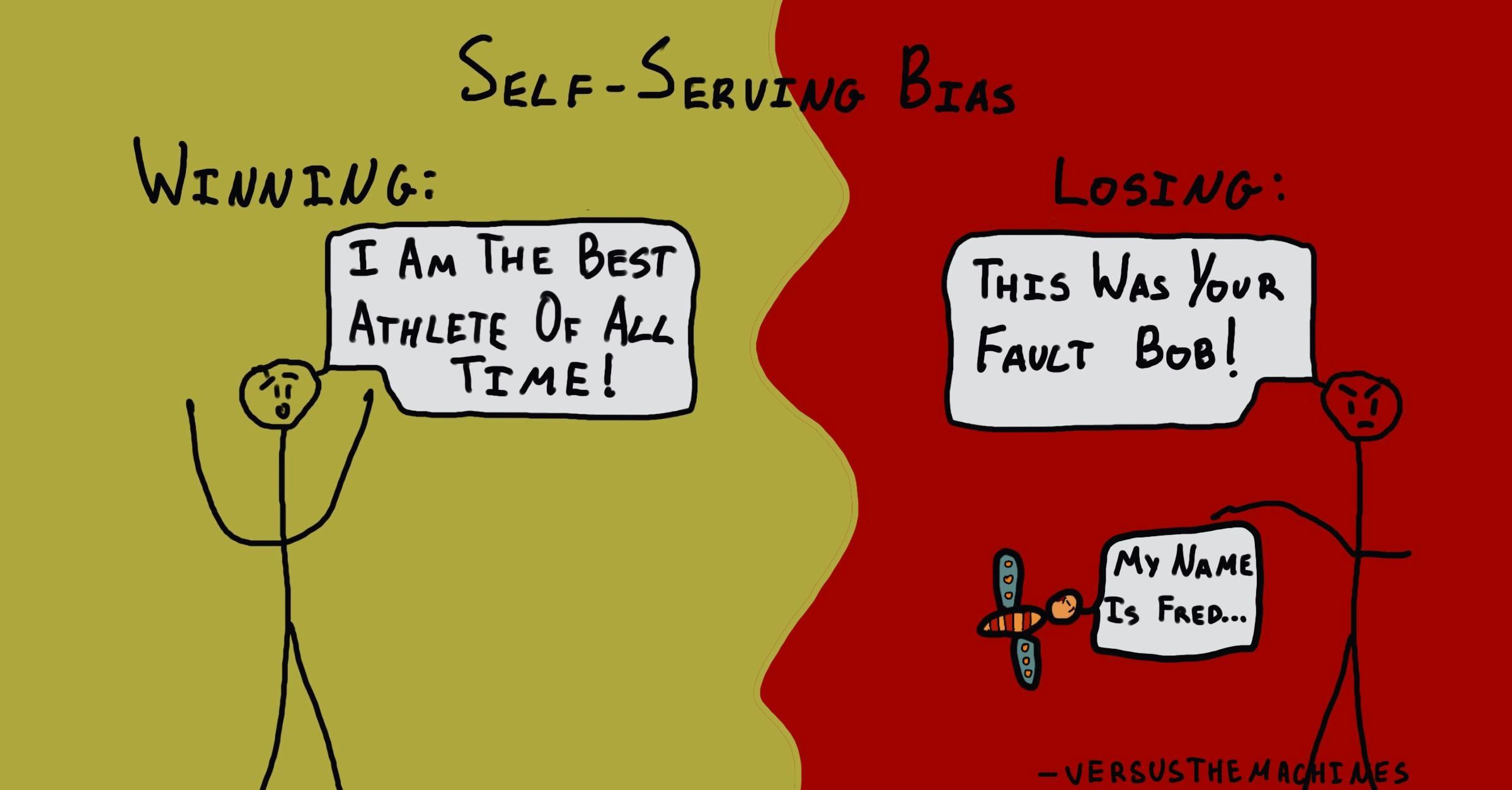Why do we blame external factors for our own mistakes?
Self-serving Bias
, explained.What is the Self-Serving Bias?
The self-serving bias describes our tendency to attribute positive outcomes and successes to internal factors like our personal traits, skills, or actions but attribute negative results or failures to external factors, shifting the blame to situational factors beyond our control, such as bad luck or the actions of others.

Where this bias occurs
Many of us will remember the feelings associated with getting a good grade versus a bad grade in school. Particularly as younger students, we can remember being proud of ourselves for getting good grades. Attributing our success to our own skills and hard work. On the other hand, if we were to receive a poor grade, we may attribute the result to external factors. These external factors could range from things such as a professor’s inability to teach the subject, the difficulty of the topic, or our group members.
This process is common among many of us, as our initial reaction is to praise ourselves when we achieve success and blame external factors for our shortcomings. This seemingly harmless habit can have significant implications on our life as we age, hence the importance of identifying and curtailing behavior related to it.














